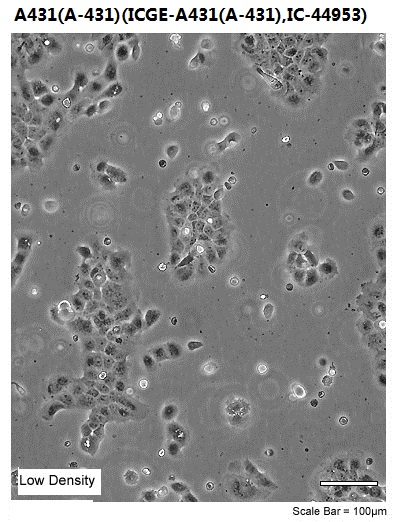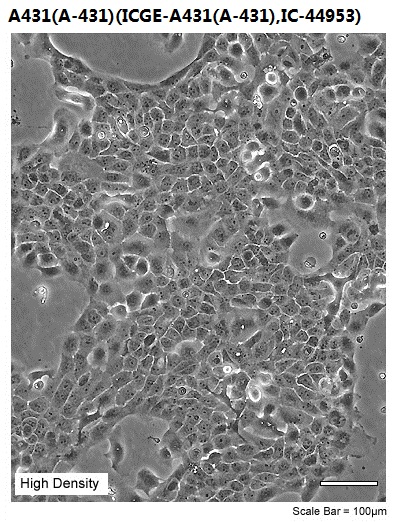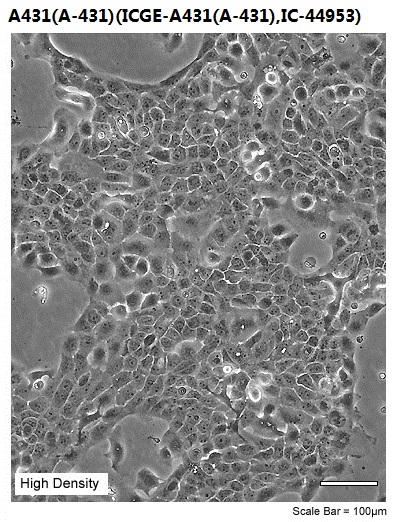


Overview
| Organism | Homo sapiens, human |
|---|---|
| Tissue | skin/epidermis |
| Product Format | frozen |
| Morphology | epithelial |
| Culture Properties | adherent |
| Biosafety Level |
1
Biosafety classification is based on U.S. Public Health Service Guidelines, it is the responsibility of the customer to ensure that their facilities comply with biosafety regulations for their own country. |
| Disease | epidermoid carcinoma |
| Age | 85 years |
| Gender | female |
| Applications |
This cell line is a suitable transfection host.
|
| Storage Conditions | liquid nitrogen vapor phase |
Properties
| Karyotype | This is a hypertriploid human cell line. The modal chromosome number was 74 occurring in 36% of cells. The rate of cells with higher ploidies was 1.0%. |
|---|---|
|
|
|
| Derivation |
The epidermoid carcinoma cell line A-431, derived from an 85-year-old female, is one of a series of cell lines established from solid tumors by D.J. Giard, et al.
|
| Clinical Data |
85 years
female
|
| Tumorigenic | Yes |
| Effects |
Yes, forms rapidly growing subcutaneous tumors in immunosuppressed mice and colonies in soft agar
|
Background
| Complete Growth Medium |
The base medium for this cell line is ATCC-formulated Dulbecco''''''''s Modified Eagle''''''''s Medium, Catalog No. 30-2002. To make the complete growth medium, add the following components to the base medium: fetal bovine serum to a final concentration of 10%. |
|---|---|
| Subculturing |
Volumes are given for a 75 cm2 flask. Increase or decrease the amount of dissociation medium needed proportionally for culture vessels of other sizes. Corning® T-75 flasks (catalog #430641) are recommended for subculturing this product.
Subcultivation Ratio: A subcultivation ratio of 1:3 to 1:8 is recommended
Medium Renewal: Every 2 to 3 days
|
| Cryopreservation |
Freeze medium: Complete growth medium supplemented with 5% (v/v) DMSO
Storage temperature: liquid nitrogen vapor phase
|
| Culture Conditions |
Temperature: 37��C
Atmosphere: air, 95%; carbon dioxide (CO2), 5%
|


